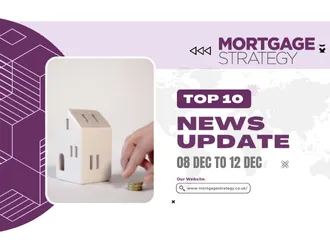
Chancellor Jeremy Hunt confirmed in November that the stamp duty cuts announced in the September mini-Budget would end on 31 March 2025.
The cuts consisted of the nil-rate band being doubled to £250,000 and the first-time buyer (FTB) threshold increasing to £425,000. The value of a property on which FTBs can claim relief was also upped to £625,000.
Leeds Building Society director of mortgage distribution Martese Carton says, in the short term, buyers will be “delighted” with the cuts.
However, Carton suggests these potential short-term financial gains “are no panacea for FTBs”.
FTBs are pivotal, so stamp duty may be a small comfort to one of the sectors that will be hardest hit by the cost-of-living squeeze
“If the supply of homes is not increased, all these cuts will do is simply further boost demand and pump up house prices, which in the longer term will only worsen the affordability problems borrowers face.”
Accord Mortgages managing director Jeremy Duncombe says purchase activity is “likely to be subdued” over the next 12 months due to the rising cost of living and higher interest rates, and their impact on affordability, among other factors.
Despite affordability being more challenging, Duncombe says FTBs are “pivotal” to keeping things moving in the housing market, so “stamp duty may be a small comfort to one of the sectors that will be hardest hit by the cost-of-living squeeze”.
He highlights that the previous reductions in stamp duty, which ended earlier this year, “helped protect the housing market’s resilience during the pandemic”.
The further move “will hopefully help create a basis for a stronger start to 2023”, he adds.
The anticipated fall in prices will outweigh the benefits of stamp duty cuts
However, National Residential Landlords Association policy director Chris Norris says the chancellor “missed the chance” to scrap the 3% stamp duty levy on the purchase of homes to rent and describes the move as “illogical”.
Research by Capital Economics suggests scrapping this levy could lead to a £10bn boost to Treasury revenue because of increased income and corporation tax receipts as a result of an increased supply of rented housing.
The latest government figures revealed stamp duty receipts from April to October 2022 totalled £12.4bn, up by £2.2bn from the same period last year.
The government said its “recent growth plan announcement on cutting [stamp duty] for those purchasing a residential property will largely be reflected in receipts from October”.
Mortgage Advice Bureau head of lending Brian Murphy says for some the deadline “will add to the influence [the cuts] have on determining people’s decisions to join, or climb, the property ladder”.
A tighter fiscal policy should, in theory, reduce the need for further contractionary monetary policy
But Murphy suggests the cuts will have “little impact” on FTBs because these borrowers have benefited already from a higher stamp duty threshold before the cuts. Instead, their attention will be on interest rates and affordability.
Murphy explains: “For others, the anticipated fall in house prices by economic forecasters will outweigh the benefits of stamp duty cuts, causing them to hold back.”
Research by Anwyl Homes found the cuts would most encourage those who were looking for the next step up the property ladder, with 50% saying the cuts would prompt them to consider moving.
Meanwhile, 45% of downsizers welcomed the cuts and 30% of FTBs said they would encourage them to buy.
Any pent-up demand is likely to start to play out in the new year
The research also found the age of borrowers impacted the likelihood that the stamp duty cuts would encourage them to consider moving.
Adults aged 25 to 34 were most likely to consider moving now (41%), followed by those aged 35 to 44 (39%), 18 to 24 (33%), 45 to 54 (30%) and 55 plus (18%).
However, Duncombe says broker feedback suggests many customers are “drawing breath after the government attempted to calm the markets after the mini-Budget”.
He adds: “There are signs that mortgage product rates may have peaked in the aftermath of that market turmoil and therefore any pent-up demand is likely to start to play out in the new year.”
Hopefully the cuts will help create a basis for a stronger start to 2023
If these early signs of greater stability come to fruition, says Duncombe, the start of the new year could bring “a fresh impetus to property transactions, and the incentive of saving on stamp duty too should help with that”.
“Remortgage and product-transfer activity are already buoyant, and we expect that to continue,” he adds.
Looking ahead, Finanze head of bespoke finance Joshua Ellard says he anticipates “a rush of sales in the months before the cut-off date, with investors scrambling to realise tax savings”.
After 31 March 2025, the cost of a property where stamp duty is applicable will reduce to £125,000 and £300,000 for FTBs, from £250,000 and £425,000 respectively.
Ellard says: “A tighter fiscal policy should, in theory, reduce the need for further contractionary monetary policy.
If the supply of homes is not increased, these cuts will simply boost demand and prices
“This is echoed by the Bank of England as inflation levels are expected to fall in 2023, reducing the pressure on the Monetary Policy Committee to increase rates.”
Ellard suggests such uncertainty “could increase the popularity of tracker products as the probability of a greater spread between five-year fixed rates and the base rate increases”.
He adds: “The Office for Budget Responsibility is expecting a reduction in house prices of 9% over the next two years — a figure I believe to be optimistic. Considering the current recession, rising rates and the increase in taxation, my view is we will see a larger drop of circa 15%.”



